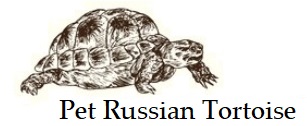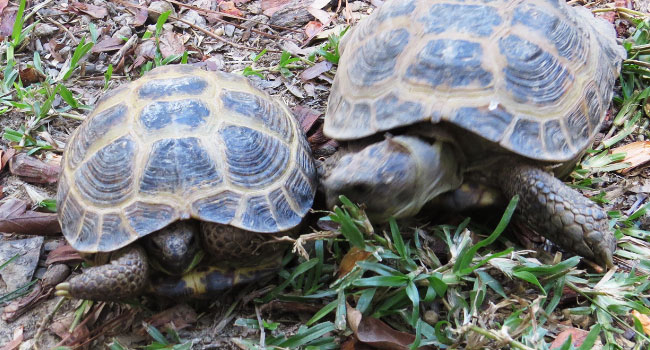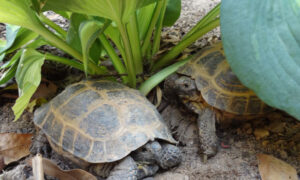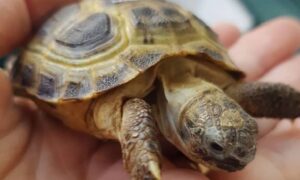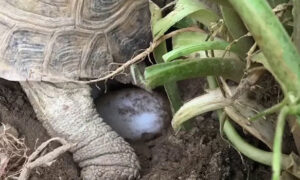Russian tortoises do best when housed by themselves. They tend to be solitary tortoises naturally when in the wild, which carries through to captivity. However because of their small size and ease of care, many people want more than one Russian tortoise. If you are one of those people, that’s fine, but you want to make sure that 1) your enclosure is plenty large enough to house multiple tortoises and 2) you are aware of the signs of bullying in Russian tortoises.
Bullying can cause stress that can hamper immune system, lessen appetite and even stunt growth. It’s very important to know the signs of bullying if you are housing (or plan to house) pairs or multiples of Russian tortoises together.
Subtle Signs of Bullying in Tortoises
Not all bullying is obvious. You may not see ramming or biting or mounting. However you may notice the Russian tortoises sleeping together or eating together. Often, people think this is cute and believe that the tortoises are buddies and love each other.
However, tortoises do not have the same feelings and emotions as dogs, cats or even birds. People tend to invoke feelings onto tortoises where they do not exist.
What’s often happening when two tortoises are “snuggled” up under the heat is that one is trying to get the best spot for basking. When the tortoises are eating together, it’s because one is trying to get the best food.
These subtle signs of bullying occure when the more dominant tortoise is trying to pysch out the more submissive tortoise. This is mental bullying.
Obvious Signs of Bullying in Tortoises
More obvious and physical signs of bullying occur when you notice fighting. You may start to see following, ramming, pushing, biting and mounting.
Flipping is another sign of bullying when one tortoise is trying to flip the other. You may think that the one tortoise is trying to help flip the one back over the correct way, however that’s not the case.
You may notice a tortoise constantly sniffing or following the other tortoise. You may see one tortoise pushing away the other from food. These are obvious overt signs of aggression and bullying in tortoises.
A bullied tortoise will likely hide more and appear more shy than the other tortoise.
Bullying does not always occur male to male or male to female. You can see bullying amongst female tortoises that are housed together, as well.
